Top 10 Most Beautiful Historical Sites in Cyprus
Cyprus is a Mediterranean island known for its mineral richness, excellent wines and food, and natural beauty since ancient times. Cyprus, which has been ... read more...inhabited for over ten millennia, is located at a cultural, linguistic, and historical crossroads between Europe and Asia. Today, Cyprus is a popular tourist destination for European travelers, particularly honeymooners (as befits the fabled birthplace of Aphrodite, the ancient Greek goddess of love), and other vacationers are drawn. Addition to there is several historic structures and attractions in Cyprus, ranging from the ancient villages of Amathus, Palaipafos, and Nea Pafos to prehistoric Choirokoitia and Crusader castles along the island's coast. The following are the ten most beautiful historical sites in Cyprus.
-
The famed 'Tombs of the Kings' are part of the Archaeological Park of Kato Pafos (Paphos), which has been on the UNESCO World Heritage Sites list since 1980.
The massive underground tombs date from the Hellenistic and Roman eras and are carved out of solid rock. The elite, including notable personalities and high-ranking officials, were buried at the Tombs of the Kings. It was used throughout the Hellenistic and Roman periods, maybe even by early Christians, until the fourth century, but the grandeur and beauty of the tombs — some of which were embellished with Doric pillars – gave the area its regal reputation.
When you initially stroll through one of the most beautiful historical sites in Cyprus, you are met with the first underground burial chambers. I am just astounded by how open and accessible they are. There are almost no restrictions whatsoever; you are free to wander at your caution. The architecture of these tombs is particularly spectacular, with some of them resembling mansions rather than burial sites. Some of the tombs are designed to seem like living rooms, with burial chambers that open into a peristyle atrium. They resemble tombs discovered at Alexandria, demonstrating the Hellenistic period's strong links between the two towns. The seven tombs that have been unearthed are spread out across a large region. The third is the most magnificent, with a below-ground open atrium flanked by columns. Other tombs feature niches constructed into the walls that were used to store the bodies of the deceased.
Unfortunately, just a few of the frescoes that would have previously decorated them have survived, but pieces can be seen here and there. The tombs' architecture, including their columns and porticos, may still be seen.
Address: Tombs of the Kings Ave 63, Chloraka, Cyprus.
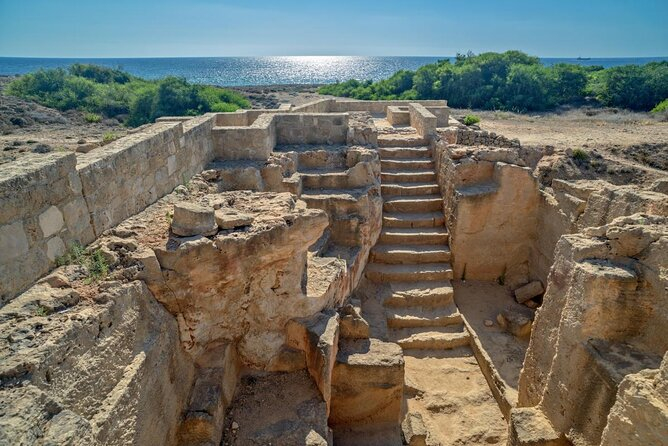
www.historyhit.com 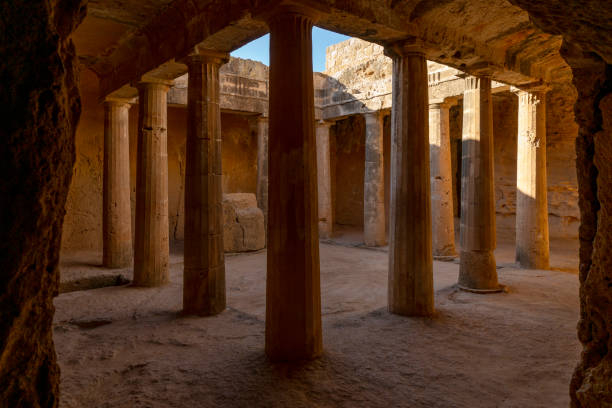
www.cyprusisland.net -
The most beautiful historical sites in Cyprus, attractions, and things to do in Cyprus are all in Kourion. Kourion was an ancient city-state near Limassol, Cyprus, and is now an archaeological site. The majority of the ruins are from the early and late Roman periods. Throughout the Roman and Byzantine centuries, Kourion was inhabited, and houses, monuments, and other constructions from these periods may still be seen today. The old theatre in Kourion is perhaps the most remarkable sight to witness today. The theatre at Kourion, which is still in good condition and can seat up to 3,500 people, dates from the second or third century AD, however, there may have been a theatre here as early as the second century BC.
At Kourion, the theatre isn't the only thing to see. The site features the ruins of a Roman market from the third century AD, which includes public baths and a Nymphaeum. Part of the 4th century AD House of Achilles – assumed to have been a reception area – with its mosaic flooring and the third century AD House of the Gladiators, so named because parts of its mosaics portray gladiatorial conflicts, are still standing. The Eustolios complex, which was a wealthy 4th to a 5th-century private mansion in Kourion and had a bathing complex, is another remarkable monument.
Kourion also has early Christian evidence, both in the form of the Eustolios complex and the early Christian basilica, a 5th century AD church on the site. The ruins of a stadium and the Sanctuary of Apollo Hylates are among Kourion's other attractions. It's worth mentioning, however, that the last two sites are separated from the remainder of the archaeological park by a small distance. There is a modest visitors center with a scale replica of the entire site to assist you to navigate your tour.Location: Episkopi, Limassol District, Cyprus.
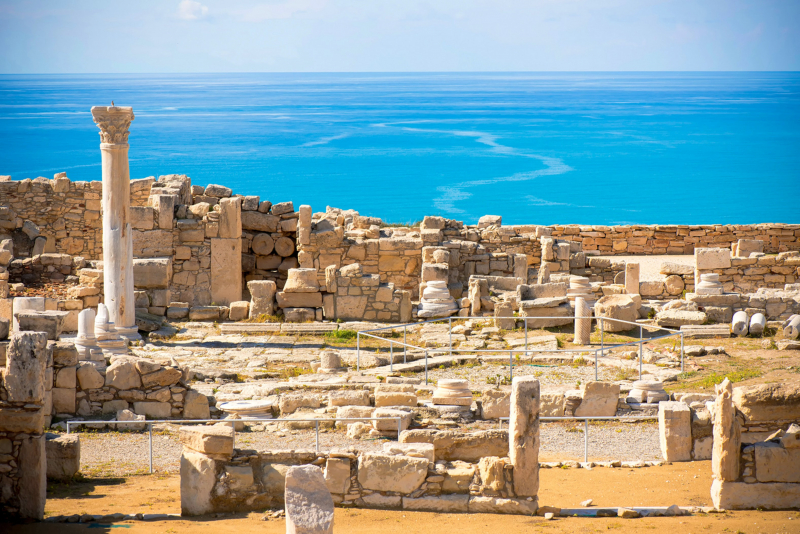
www.historyhit.com 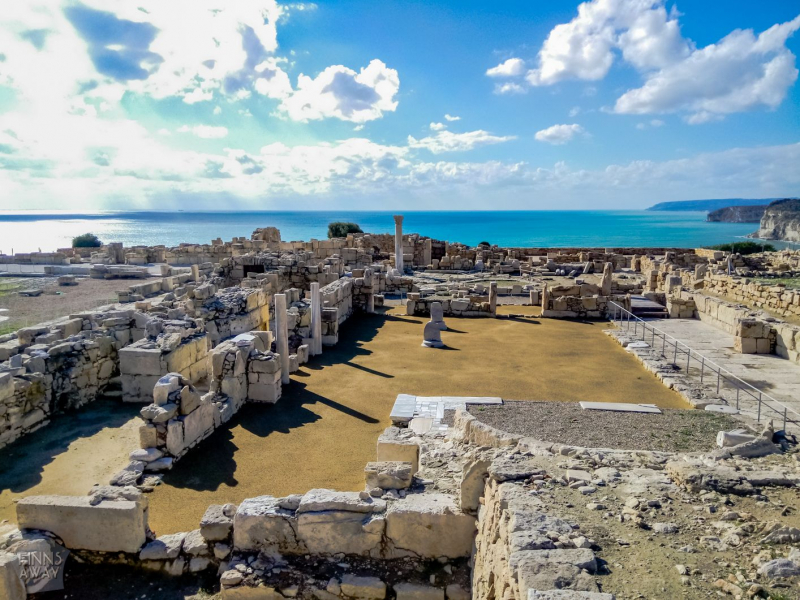
www.cyprusisland.net -
The Church of Agios Lazaros, also known as the Church of Ayios Lazaros, is a Byzantine structure erected over the purported grave of Saint Lazarus in the late 9th and early 10th century AD. Saint Lazarus, according to Orthodox belief, escaped Judea to Cyprus following Jesus' resurrection. Paul and Barnabas ordained him as a bishop.
During the Ottoman colonization of Cyprus, the Church of Agios Lazaros was used as a mosque, although it has since been converted back to a church. It's been damaged throughout the years, including a terrible fire in 1970, but it's been renovated several times.
The temple's construction was finished by the beginning of the 10th century. For Byzantine churches, it features a characteristic cross-domed form with three naves. Three domes were built above it under the Turkish administration, but they were demolished. Despite this, the gold-covered iconostasis within the church has been saved until date (2018) and is a beautiful example of baroque woodcarving. The Tomb of St. Lazarus is located under the sanctuary of the church and is open to the public, while the Byzantine Museum is located close to the church and has valuable religious icons, items, and heirlooms.
The Church of Saint Lazarus in Larnaca has enormous historical and theological significance. Thousands of people visit this Holy site each year to worship. On Lazarus Saturday, which is observed by all Christians, a large crowd gathers here.Address: Ayiou Lazarou, Larnaca, Cyprus.
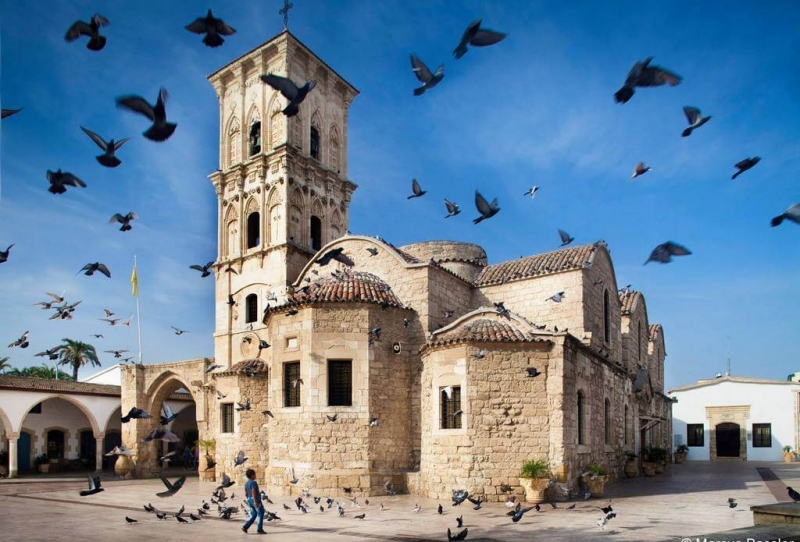
www.historyhit.com 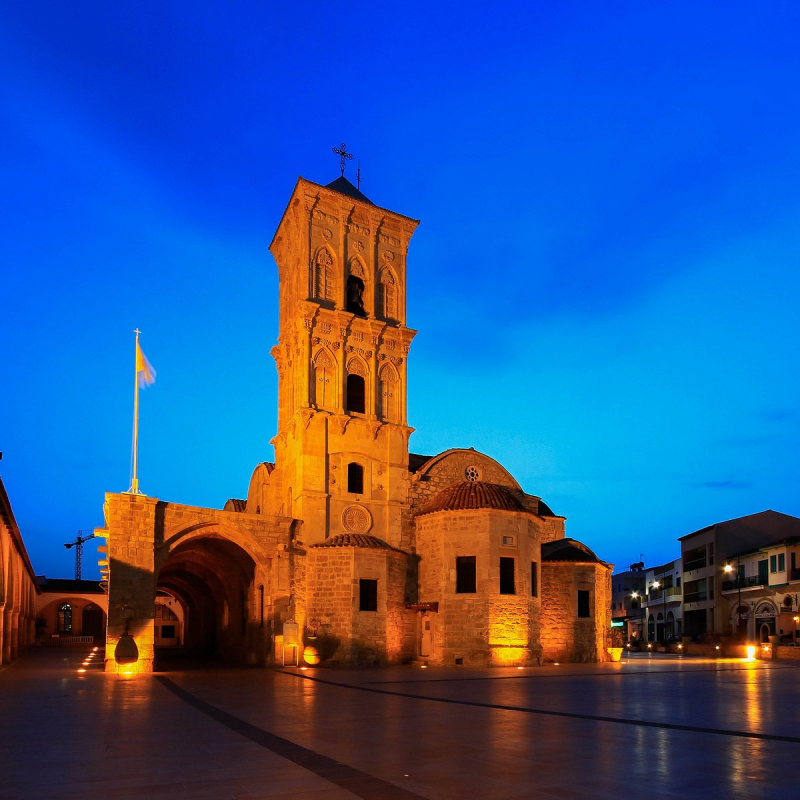
www.cyprusisland.net -
The Kolossi castle in Limassol, a monument of Cyprus's crusading past, served as a rest station for knights on their way to Jerusalem, more than 700 years today it became one of the most beautiful historical sites in Cyprus. Kolossi Castle was built in the 13th century in Limassol, Cyprus, as a Frankish fortress. Kolossi Castle was built approximately 1210 AD by the Order of Saint John, or Knights Hospitaller, and remained nearly entirely in their control until it was destroyed by Mameluke attacks in 1525. The only time it was interrupted was when it was taken over by the Knights Templar between 1306 and 1313.
Louis de Magnac ordered the current Kolossi Castle to be erected in 1454. On the structure's wall, his coat of arms may be seen. The castle now consists of a three-story keep with a bailey attached. Today, the castle is a single three-story structure with an adjacent rectangular courtyard or bailey of 30 by 40 meters. The remnants of a fourteenth-century sugar mill may be seen just next to the castle.
For approximately €2,50, you may visit the exceptionally well-preserved Crusader stronghold today. You may climb from the basement to the roof to overlook the surrounding region, which is the same view that Kolossi's residents would have experienced millennia ago. Also, look for Louis de Magnac's coat of arms on the castle walls. Visitors may also try some Commandaria, a sweet wine produced in the area. After Richard the Lionheart married Berengaria of Navarre in neighboring Limassol, the king designated the dessert wine to be "wine of kings and king of wines."Address: MW8M+3J4, Yunus, Cyprus.
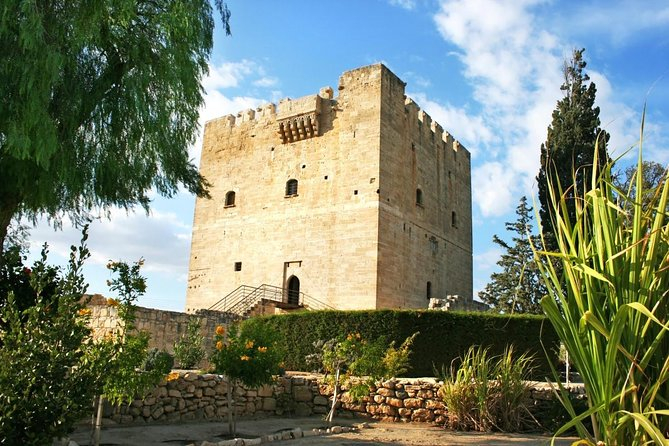
www.historyhit.com 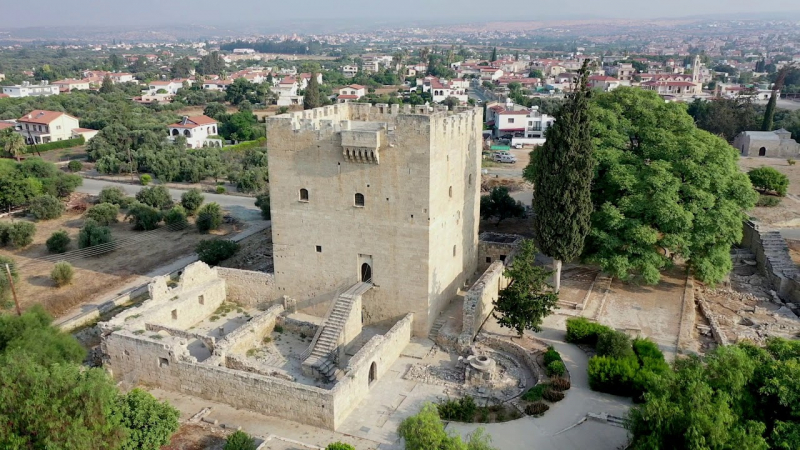
www.cyprusisland.net -
Paphos Castle (Medieval Fort), which stands proudly at the west end of the town's harbor, was originally a Byzantine fort designed to safeguard the harbor. It was restored by the Lusignans in the 13th century but later demolished by the Venetians. When the Ottomans captured the island in the 16th century, they renovated it. The western Frankish tower, with its Venetian modifications, was restored by the Ottomans in 1592. An inscription above the castle's lone entrance attests to the renovation.
Paphos Castle was rebuilt by the Ottomans, and the site can now be seen in Paphos Harbour. The Ottoman dungeons, castle battlements, and what was once a mosque are all open to the public. Paphos Castle was taken over by the British in 1878 and operated as a salt storage facility until 1935 when it was declared a national monument.
The castle's primary structure is a large square tower with an enclosed courtyard in the center. During Ottoman rule, the bottom level consists of a central hall with tiny chambers on each of its two long sides that were utilized as jail cells. On the roof, there are 12 battlements, each with a matching number of guns. When the Ottomans gave over control of the island to the British in 1878, the guns were removed, and the castle was utilized as a salt store until 1935 when it was proclaimed an Ancient Monument under the Antiquities Law.
Paphos Castle is currently a tiny rectangular stone edifice with one tower and two levels. The castle serves as a tourist attraction and hosts thematic exhibitions on occasion. The castle is currently the site of the annual Paphos Outdoor Cultural Festival, which takes place in September. Several archeological digs have been conducted to learn more about its history.Address: Harbour Area, Kato Pafos.
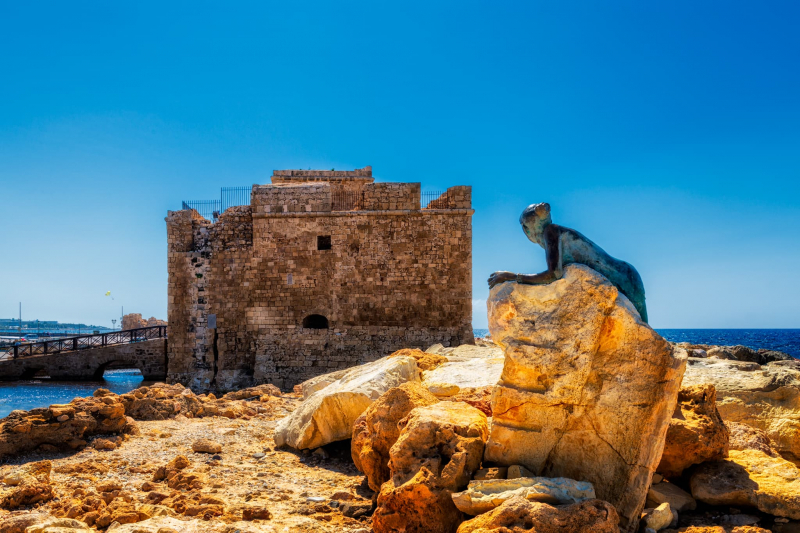
www.historyhit.com 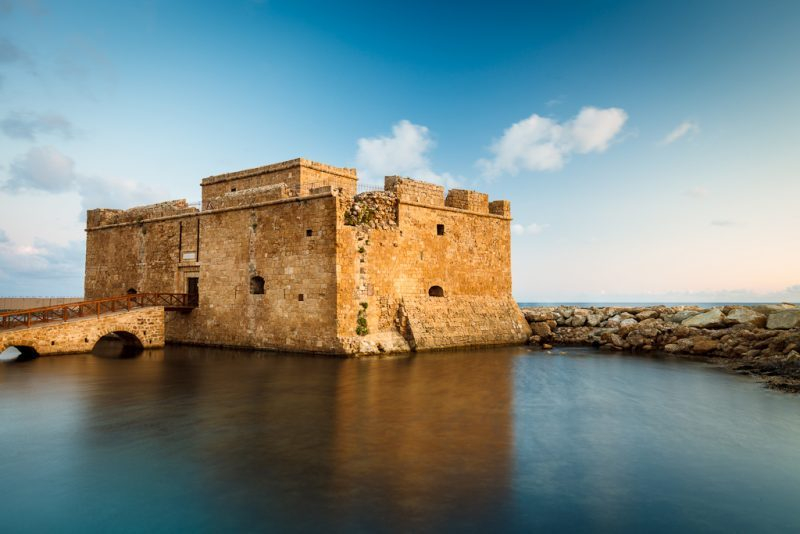
www.cyprusisland.net -
Paphos is a historic seaside city on Cyprus' extreme southwestern coast, where crystal blue waves stretch as far as the eye can see. Thousands of years of rich history may be discovered on the island's tip. The amazing UNESCO Nea Pafos Archaeological Site in Paphos is a must-see for anybody visiting the most beautiful historical sites in Cyprus.
Nea Pafos is an archaeological site near Paphos Harbour in Cyprus that houses the ruins of the island's former capital. Nikolas, the final king of Paphos, founded the city in the 4th century BC. The old Roman villas of Nea Pafos are the most well-known attractions. These are mostly from the second century AD. The Paphos archaeological complex was listed on the UNESCO World Heritage List in 1980 for its exceptional mosaics and ancient remains, as well as its historical and religious significance.
The House of Dionysos, the House of Aion, the House of Theseus, and the House of Orpheus all have remarkable mosaic flooring. Meanwhile, the Basilica of Chrysopolitissa is a late Roman and early medieval structure, and the Castle of Forty Columns is a Byzantine stronghold noted for its intact granite columns. In addition, excavations have uncovered an agora, asklipieion, basilica, onion, and Hellenistic-Roman theatre, as well as a necropolis, which is known as the "Tombs of the Kings."
You'll be astounded by the size of the Kato Pafos Archaeological Site and what you can find among its ancient paths. For about €4.50, you may visit temples and mosaics dating from the Neolithic period through the Hellenistic and Roman ages, as well as the Byzantine period. This archaeological site is incredible.
Address: QC45 + C8G, Paphos, Cyprus.
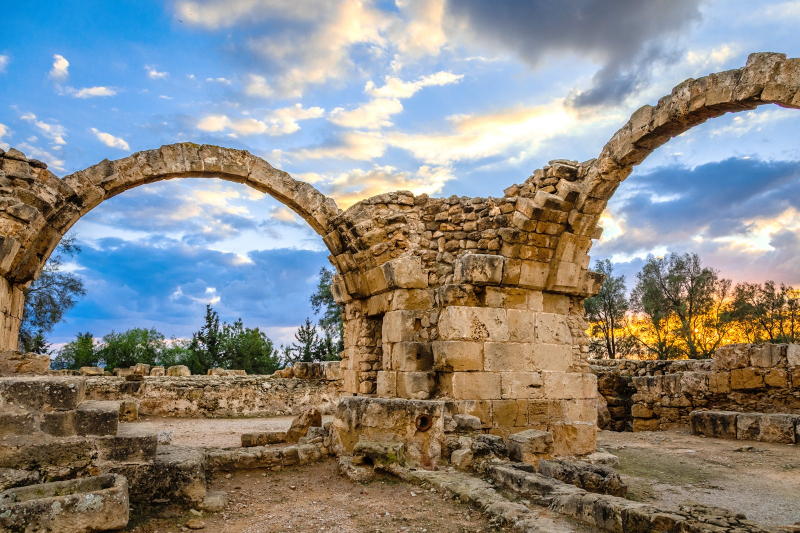
www.historyhit.com youtube.com -
Palaipafos, also known as Palaepaphos, is an archaeological site located near the hamlet of Kouklia in Paphos. Its foundation traditions evoke both Aphrodite and Agepenor, a hero of the Trojan War, and it is tied to the ancient religion of the "Great Goddess" of fertility. The Sanctuary of Aphrodite, constructed by the Mycenaeans circa 1200 BC, is Palaipafos' oldest and most renowned landmark.
Palaipafos was a religious and cultural center until its final monarch, Nikokles, transferred the capital to neighboring Nea Paphos in the 4th century BC. Palaipafos resurfaced as a cultural and religious center under the Romans. Many noteworthy monuments can be found on the site, and the museum, which is housed in a 13th-century mansion, displays the excavated remains.
The House of Leda; the northeast entrance of the defensive wall; the city wall and the Palace of Hadji Abdulla; the Church of Panagia Katholiki; the Lusignan Manor House; the cemeteries and the Lusignan sugar-cane factory on the coastal plain are the other noteworthy structures of Palaipafos.
The museum, which is situated in a Lusignan Manor, displays many interesting artifacts from the area and depicts how the Cult of the Goddess of Fertility evolved into the Cult of Aphrodite, while the sugar-cane refinery is also available to the public. The Sanctuary of Aphrodite is one of the site's most important structures and the most famous of the Goddess' sanctuaries. Its ruins originate from the 12th century BC, and it was used as a place of worship until the 3rd and 4th centuries AD.
Address: Kouklia village, 14km east of Pafos.
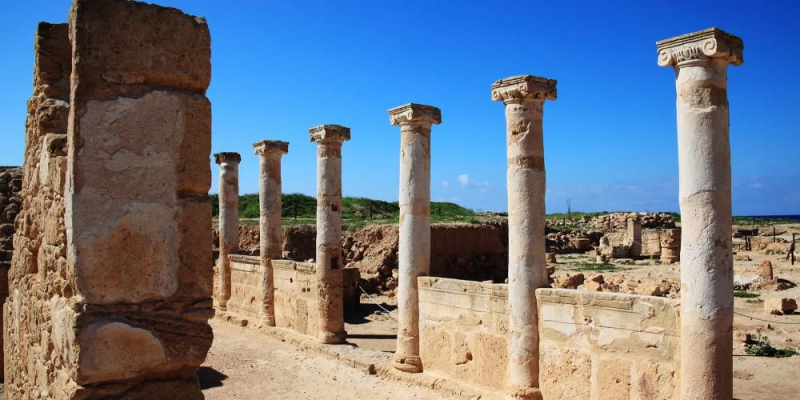
www.historyhit.com 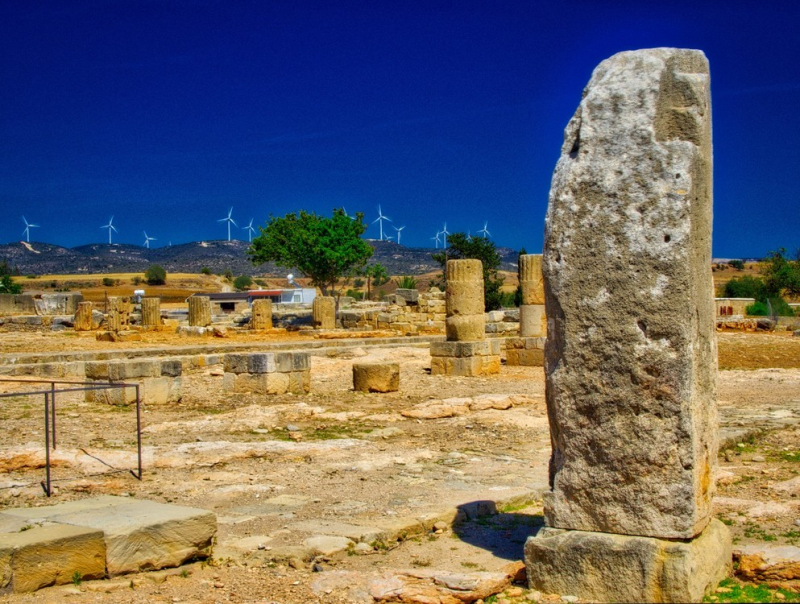
www.cyprusisland.net -
The Neolithic settlement of Kalavasos-Tenta is located four kilometers from Kalavasos in the Larnaca District and is one of Cyprus' most important Neolithic settlements. Kalavasos-Tenta was erected on a natural hill during the New Stone Age, around 7000 BC. Between 8000 and 8600 BC, pre-pottery agriculturalist inhabitants arrived in Cyprus, constructing circular dwellings with burnt lime terrazzo floors. Their economy revolved around sheep, goats, and pigs, and they spent their days farming, hunting, and caring for animals, while homesteaders weaved textiles.
The variety is visible in the domestic architecture of Tenta, which is one of Tenta's most prominent qualities. Although all of the major structures are curvilinear, their shape, scale, and internal arrangement, as well as their construction methods, differ greatly. The curving walls of what were the village's round cottages may be seen among the ruins of Kalavasos-Tenta. Kalavasos-circular Tenta's walls were made of mudbrick and joined together to form a complex enclosed by a stone defense wall. The houses at Tenta had flat and domed roofs made of branches, reeds, and rammed earth, and the surfaces of the walls were frequently beautifully adorned, such as a "painting representing two human figures with upraised hands", which forms a distinctive part of the Cypriot architectural landscape today. There is a wooden path beneath the big tended roof that allows you to glimpse the top of the remains. Along the tour around one of the beautiful historical sites in Cyprus, there are a few highly instructive boards with blueprints showing the ruin's original design and purpose.
A collection of handcrafted artifacts discovered in Tenta, including a restored mural, is on display at the Cypriot Museum in Nicosia. Other pieces are on show in the Larnaca Regional Museum. The numerous kinds of objects discovered at Tenta during the Aceramic phase levels are identical to those discovered at Khirokitia and other Cypriot Aceramic sites. The abundance of stone containers, some of which have fairly complicated designs with spouts and other characteristics, clearly demonstrates the competence attained in the working of both hard stones like diabase and softer limestone. Complete vessels have been recovered just a few times, although pieces are common on the site's surface and in excavated strata.Address: Q823+X7P, Kalavasos, Cyprus.
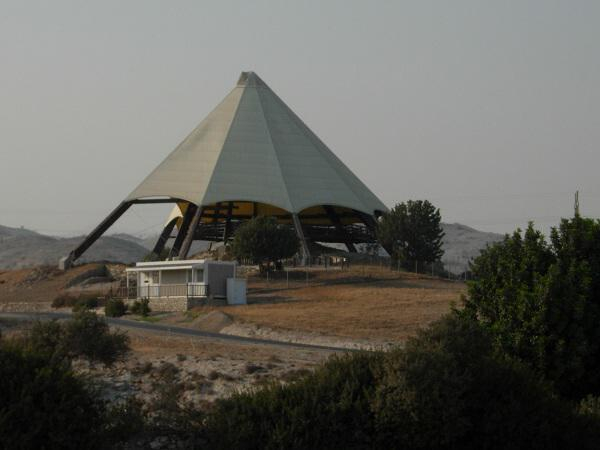
www.historyhit.com 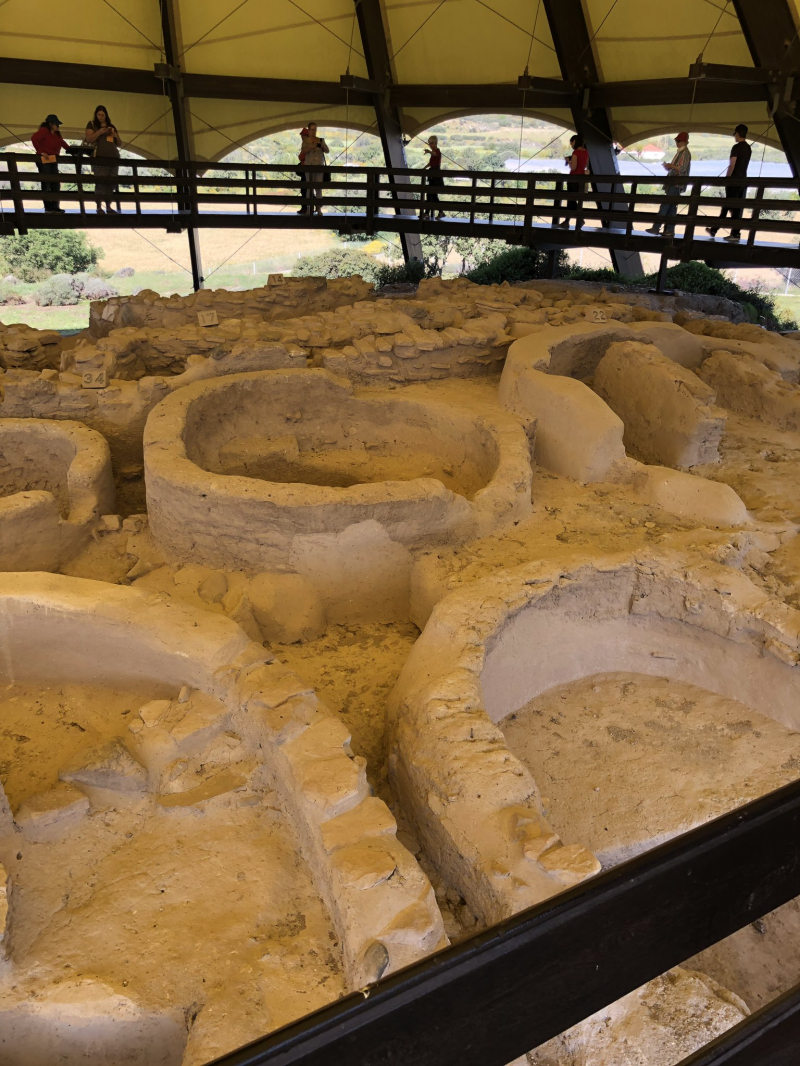
www.cyprusisland.net -
Choirokoitia was an ancient agricultural community in Cyprus that dates back to 7000 BC and was the island's oldest human settlement. Choirokoitia is a World Heritage site, according to UNESCO, and is "one of the most important prehistoric sites in the eastern Mediterranean," especially since it played a vital role in the region's cultural evolution.
The archaeological remains are important and in outstanding condition. It would have been made up of circular homes with flat roofs and protective walls made of mudbrick and stone. The planning and construction of such a location require a concerted societal endeavor that has few precedents in the Middle East. A dwelling was made up of many circular structures with hearths and basins set around a tiny central courtyard where household activities took place. Anthropomorphic stone figures, combined with burial and death rites, attest to the existence of intricate beliefs among the findings of flint and bone tools, stone containers, and vegetal and animal remnants.
Five distinctive cylindrical-shaped homes have been recreated near the hamlet today, using the same Neolithic materials and building methods. Visitors may walk inside and examine reproductions of household items found within the ancient homes, giving them a very vivid and realistic impression of how the village would have looked. Similarly, trees, wildlife, and plants that have developed in Cyprus since Neolithic times surround the village. Visitors can spend a few hours roaming around the ruins of the original site after viewing the recreated dwellings.Address: Q8WV+HHG, Choirokoitia, Cyprus.
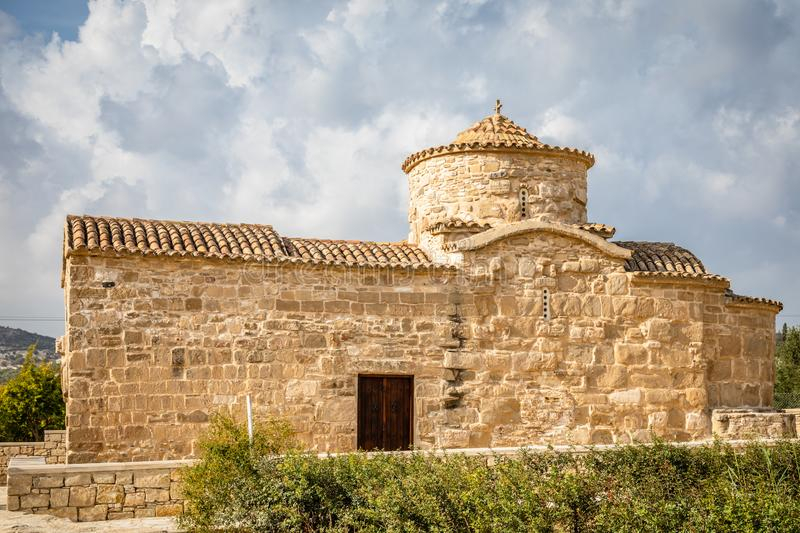
www.historyhit.com 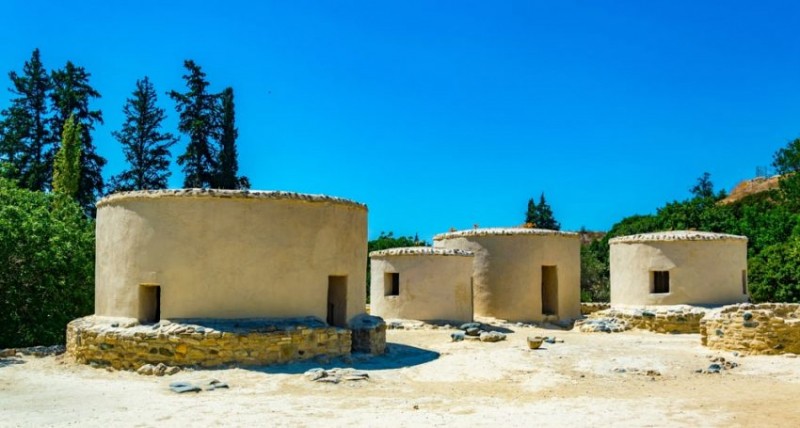
www.cyprusisland.net -
Amathus is a Cyprus archaeological site that has the ruins of one of the island's earliest ancient settlements. It may have been founded by the Eteocyprians and has been inhabited since at least 1050 BC. The Greeks, Phoenicians, Persians, Ptolemies, and Romans all occupied it at one time or another. Amathus appears to have been abandoned in the late seventh century AD.
Amathus is linked to the Aphrodite religion as well as the Ariadne mythology. Several tombs, an acropolis with a 1st century AD Roman temple to Aphrodite, an agora with public baths, and the remnants of Amathus' 8th century BC palace are among the ruins of Amathus today.
The remains of the Temple of Aphrodite, as well as tombs dating from the Graeco-Phoenician early Iron Age era, are among the highlights at the Amathus site. In addition, new excavations have unearthed remains of the acropolis and agora, as well as parts of the upper and lower city. It's also worth noting that the world's largest stone vase was discovered at the Amathus site and is now on display at the Louvre Museum in Paris. A huge limestone amphora, the stone vase dates from the 6th century BC. It stands 1.85 meters tall and weighs 14 tons.
Tourists and visitors may take a stroll around the old site and see unique and exquisite archaeological relics that have been buried for millennia. The site is fairly big, so visitors should plan on spending at least two hours there, and it is recommended that they bring a hat and plenty of water, especially if they visit during the summer months when the weather is particularly hot.
Address: Ancient Amathunta, Lemesos, Cyprus.
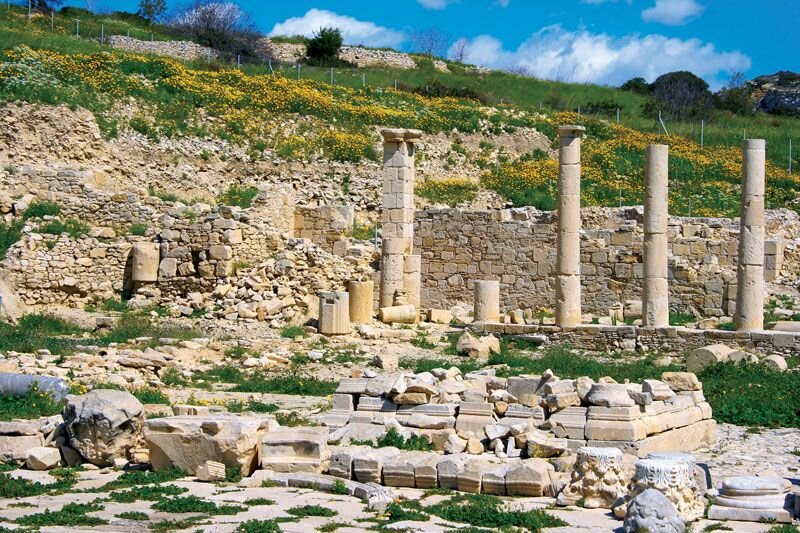
www.historyhit.com 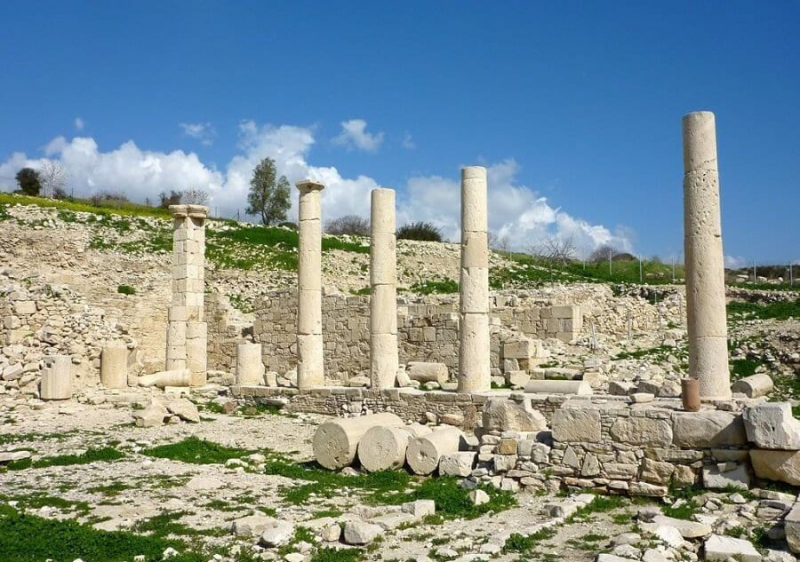
www.cyprusisland.net































